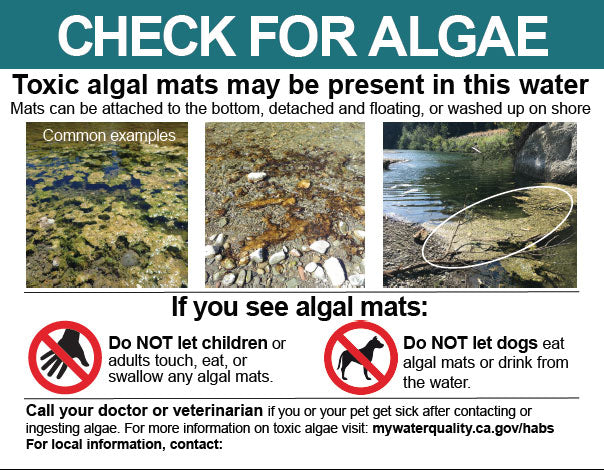A Deep Dive into its Impact on Scuba and Freedivers

We explore the fascinating phenomenon known as "red tide" and its profound implications for scuba divers and freedivers alike. Red tide, also referred to as harmful algal blooms (HABs), is an environmental occurrence that can have far-reaching consequences. Scientists are concerned, however, that there has been an increase in the number of blooms that occur each year, and that blooms, particularly toxic blooms, are occurring in parts of the world where they never occurred before. The increased red tide activity could be related to human activity, which has greatly increased the amount of nutrients that enter our coastal waters. In this article, we will unravel what red tide is, how to identify its presence, its significance for scuba and freediving, and why it demands our attention.
Understanding Red Tide:
Red tide is a natural phenomenon caused by the rapid proliferation (resulting in millions of cells in each gallon of water) of certain types of microscopic algae in marine or freshwater environments. In simplest terms, a red tide is a bloom of phytoplankton. Phytoplankton are microscopic, single celled plants that occur naturally in our coastal waters. Red tides are caused by a particular group of phytoplankton called dinoflagellates, which seem to prefer warmer and calmer waters. While some algae are beneficial, certain species produce harmful toxins during their blooming phase. These toxins can have detrimental effects on marine ecosystems, aquatic organisms, and even humans and your pets.
Identifying Red Tide:

Recognizing the presence of red tide is crucial for both scuba and freedivers. Here are some key indicators to help you identify if red tide is occurring in your area:
- Discoloration: The water may take on a reddish, brownish, or greenish hue, although the color can vary. The phytoplankton cells that cause a red tide contain pigments for capturing sunlight needed for cell nourishment, growth, and reproduction. These pigments can give off a reddish color when millions of cells are concentrated in each gallon of seawater along our coast. If you were to look at just one of these cells under a microscope it might actually have a golden-brown color. Red tides can actually take on the appearance of a variety of colors -- from brown to burgundy, to bright red, and even yellow in some parts of the world. The color of a bloom depends on which phytoplankton species is blooming, along with other factors such as light intensity and the angle of the sun shining on the water.
- Unpleasant Odor: Red tide often emits a pungent, sulfurous smell, similar to rotten eggs.
- Dead Marine Life: Large numbers of fish, shellfish, or other marine organisms washing up on shores are a telltale sign of red tide.
Impact on Scuba and Freedivers:
Red tide has several implications for scuba divers and freedivers, which need to be taken into account for a safe and enjoyable experience:
- Reduced Visibility: Algal blooms can significantly reduce water clarity, limiting visibility and making navigation more challenging.
- Respiratory Irritation: The toxins released by red tide can become aerosolized, leading to respiratory discomfort or irritation if inhaled. Divers with asthma or respiratory issues should exercise caution. ((Symptoms can vary depending on how the person or animal was exposed, and whether the HAB is in salt or fresh water. Ear, eye, nose, skin, and throat irritation, and headache. Severe symptoms can include paralysis, respiratory illness, and seizures. Abdominal pain, diarrhea, liver and kidney damage, and vomiting. (Pets may exhibit drooling, diarrhea, low energy, not eating, stumbling, tremors, and vomiting.))
- Ecological Disruption: Red tide events can cause mass mortality of marine life, affecting the biodiversity and overall health of underwater ecosystems.
How Long Does a Red Tide Last?
Red tides can last from days to months. The length of time that a plankton bloom continues depends on many things, such as available nutrients and sunlight, water temperature, changes in wind or surf conditions, competition with other species, and grazing by zooplankton and small fish.
The Importance of Red Tide:
Understanding and addressing red tide is of utmost importance due to several reasons:
- Human Health: The toxins produced by red tide can accumulate in seafood, leading to food poisoning or shellfish poisoning if consumed. Proper monitoring and timely advisories are vital to safeguard public health.
- Economic Impact: Red tide events can devastate local economies that rely on tourism, recreational fishing, and seafood industries. Effective management and mitigation strategies are necessary to minimize economic losses.
- Environmental Balance: Red tide disrupts the delicate balance of marine ecosystems by depleting oxygen levels, leading to "dead zones" devoid of marine life. Preserving these ecosystems is essential for maintaining biodiversity and ecological resilience.
Conclusion:
Red tide is a mesmerizing yet potentially harmful phenomenon that warrants our attention and proactive measures. As scuba divers and freedivers, being aware of its presence, understanding its impact, and supporting conservation efforts can contribute to the long-term health and preservation of our oceans. Let's dive responsibly, embracing the wonders of the underwater world while striving to protect it for future generations.
To find out if red tide is happening in Los Angeles or any specific location, I recommend checking with local environmental agencies, such as the California Department of Public Health or the California Department of Fish and Wildlife. These organizations typically monitor and provide updates on red tide occurrences in their respective regions. Additionally, local news outlets or online resources may also provide information about current red tide conditions.
CDFW is also tracking reports from partners and community scientists to determine where fish mortalities are occurring. Due to the likelihood of increased fish mortalities through the weekend, CDFW is encouraging people who may be recreating on the nearby shorelines in affected areas to report sightings of dead fish through the iNaturalist smartphone app
For information on marine (coastal) HABs, including red tides, please refer to the California Harmful Algal Bloom Monitoring and Alert Program (CalHABMAP) and CDPH's Marine Biotoxin Monitoring Program webpages.


Share:
Discovering New Depths: Thriving During Economic Uncertainty and Industry Strikes with Diving
Beneath the Surface: The Hidden Risks of Diving and Strokes